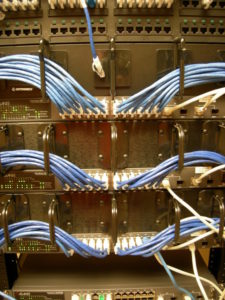Welcome to MIFRA Networking
Your network cabling specialists.
Welcome to MIFRA Networking, your network cabling specialists. A quality network cabling company. At MIFRA Networking we can supply all your network cabling needs from cat5e, cat6, cat6a to cat7.
As a network cabling specialist we also offer an extensive range of professionally installed IT related cabling services. We understand that each network installation is different from the next and our aim is to provide you with the most affordable and viable solution.
We cater for new cabling installations or additions to your existing cabled network infrastructure. No Network Cabling Job is too big or small. This cliche I am sure you have heard many times before, but yes, we do mean it: We have dedicated teams ready to assist you regardless of your requirements, small or large. We are highly focused in giving quality service, all the time, every time!
We prefer to offer trunking solutions rather than cheap and untidy looking glued cable on the surface of any structure. Our standard network points include a verified, tested and labelled Cat5e / Cat6 network point up to 100m in length, verified wall box or keystones as well as a 1-3m fly lead per data point.
Types of Networks
Physical Typologies
This is the network cabling layout used to link different devices is the physical topology of the network
The physical topology of particular network is determined by the capabilities of the different network access and devices the level of control or fault tolerance desired, and the cost associated with network cabling.
LAN (Local area network)
All network points are connected to a central point usually a hub or switch. The hub or switch will act as a signal repeater. The star typology is the simplest to design and implement. Peripherals such as wireless AP’s can be added to this network to extend it to wireless devices such as tablets and cell phones. This type of network can be segmented using switches and linking the switches via network cable or a fibre link.
WAN (Wide Area Network)
Wide area network type is slightly more complex and what it basically means is that we are connecting two or more LAN networks together over a greater distance via routers. So we would have two locations that would have all the devices connection by network cable to a switch. The switch would then connect to a router. The router would connect to a line then we would need a ISP and a router on the other networks side. The router routes it down the quickest virtual path to its destination therefore connecting two LAN’s
MAN (Metropolitan Area Network)
Metropolitan Area Network types of networks are smaller than a WAN but Larger then a LAN and uses different types of connections ranging from wireless bridges, fibre connections and network cabling uplinks. It can connect users in different building but that are close by and consolidate it into one network. This type of network takes a lot of upkeep and regular maintenance and checking. The problem with this type of network, if not maintained correctly, is that is it usually segmented with switches and should one of the connecting peripherals fail so does that whole segment of the network it is wise to have back up equipment on hand ready to replace at a moments notice.
WLAN (Wireless Local Area Network)
At MIFRA networking we are not a fan on this type of network as it requires no network cabling. Jokes aside this is a LAN that connects via WIFI usually on a 2.4 ghz frequency. This frequency is saturated and full of noise we recommend that is only be used for basic functions such as web browsing. As soon as you try run and data based programs over a WIFI link and add a few users the WLAN becomes bottle-necked. A typical Access Point (AP’s) has a through put of 300 mbps. In a perfect environment where the band is not saturated and there is no noise 10 users on the network would get 30 mbps each and would not be able to run any data based programs. On a basic Cat5E network cable you will get a 1 gig up-link. That is a major difference.
We also supply and install a large range of professional data cabinet’s, the contents thereof include patch panels, patch leads, brush panels and switches. We will determine your entire network cabling requirements and perform a prestart site inspection.
Some network cabling companies use inferior cable that does not have the correct industry standards on them being a ISO/IEC standard this is important to check as it will cause your network cabling installation to be slow and corrupt your data.
